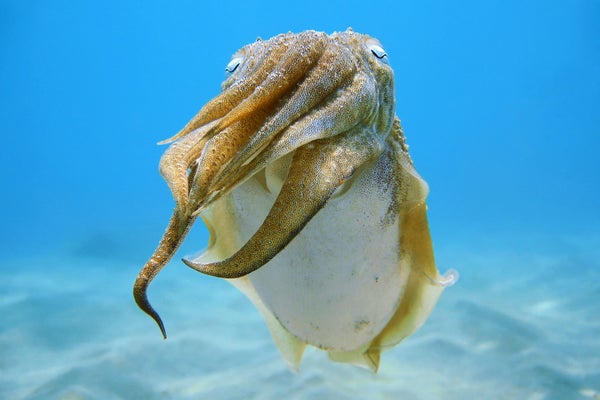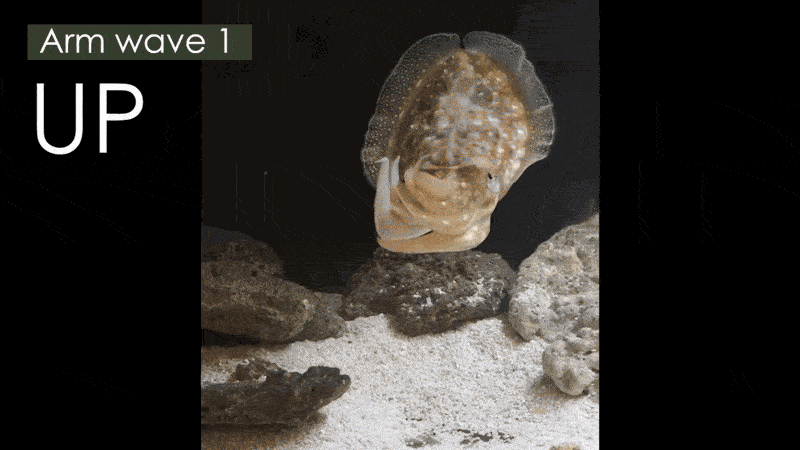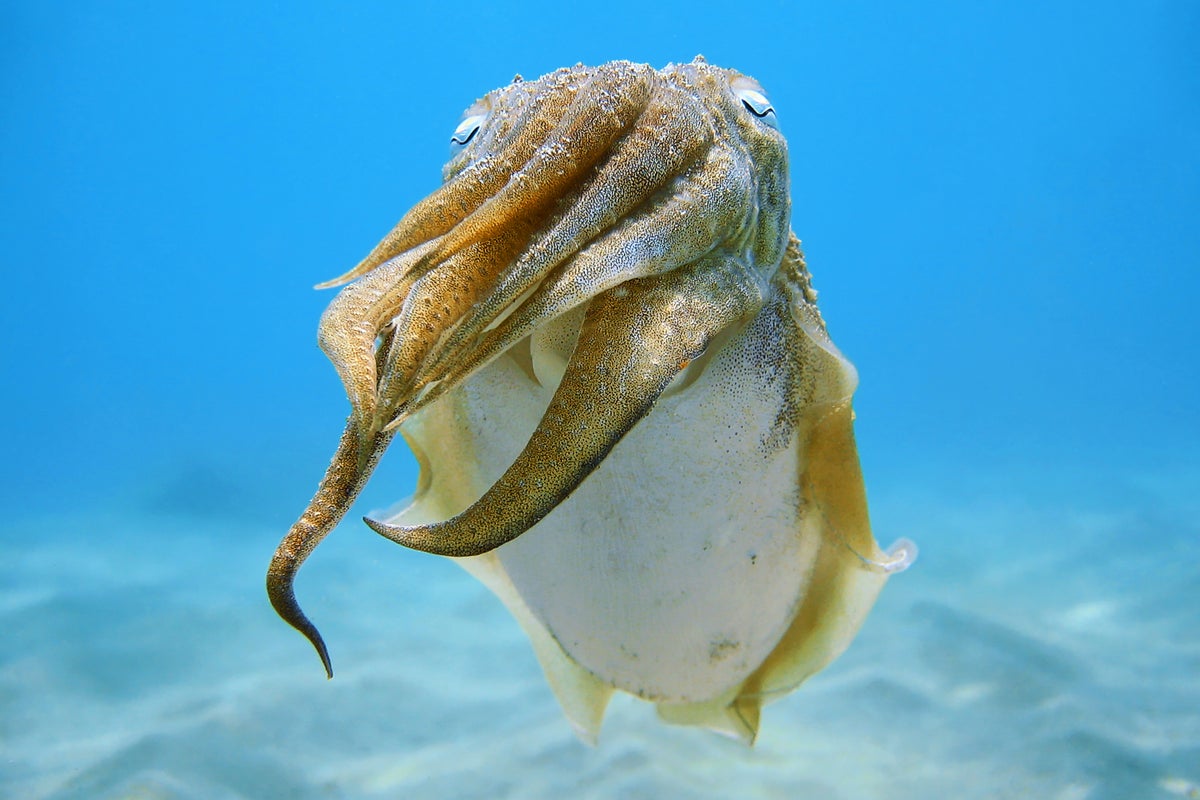Cuttlefish May Communicate with Discolike Arm Gestures
Scientists identified four arm wave signals cuttlefish use: “up,” “side,” “roll” and “crown”

Researchers observed the common cuttlefish (Sepia officinalis) routinely wave its arms in four flashy gestures.
Cuttlefish wave their expressive arms in four distinctive dancelike signals—potentially letting them communicate visually and by vibration.
These marine invertebrates, which have eight sucker-lined “arms” and two tentacles near their mouth, can alter their body’s color patterns to blend in with the background or create zebralike stripes to attract a mate. Some have been known to raise their arms to intimidate predators or to extend their fourth arm to signal a desire to mate.
But cognitive neuroscientist Sophie Cohen-Bodénès and computational modeler Peter Neri, both then at the École Normale Supérieure in Paris, noticed cuttlefish doing something that hadn’t been described before: making specific, repeated and relatively complex arm gestures at each other.
On supporting science journalism
If you’re enjoying this article, consider supporting our award-winning journalism by subscribing. By purchasing a subscription you are helping to ensure the future of impactful stories about the discoveries and ideas shaping our world today.
Studying two species, common cuttlefish (Sepia officinalis) and dwarf cuttlefish (Sepia bandensis), the two researchers have identified four arm-waving signs, which they call “up,” “side,” “roll” and “crown.” The scientists recently posted their observations in a paper on the preprint server bioRxiv.

The four cuttlefish gestures: “up,” “side,” “roll” and “crown.”
Cohen, Sophie (2025), “Cuttlefish interact with multimodal arm wave sign displays”, Mendeley Data, V4, doi: 10.17632/f3sp55762b.4, CC BY 4.0
The “up” sign involves cuttlefish extending one pair of their arms upward as if swim dancing to the Bee Gees song “Stayin’ Alive” while twisting their other arms together in the middle. For the “side” sign, the animals bring all their arms to one side of their body or the other. The “roll” sign involves cuttlefish folding all their arms beneath their head (making their eyes bulge out), as if they are about to do a front flip. And the “crown” sign is rather like when a person puts the fingertips of both of their hands together to form a pyramid shape.
Cohen-Bodénès and Neri recorded cuttlefish signing in different contexts and played the videos back to other individual cuttlefish.
“We found that when they see [others] signing, the cuttlefish sign back,” Cohen-Bodénès says. “We don’t think it’s a mimicking signal because when they sign back, they sometimes display different types of signs.” This suggests a possible communication signal, Neri adds.
The researchers also used a hydrophone—a device used to record sounds underwater—to capture the vibrations each sign created in the water. They then played those vibrations back to cuttlefish that couldn’t see the signs but could feel the water pressure changes—and the cuttlefish still responded with their own signs. This is the first piece of evidence that cuttlefish might communicate with one another by emitting specific vibrational signals, Cohen-Bodénès says. Cuttlefish may detect these signals with saclike sense organs called statocysts or an array of sensory cells running along the skin similar to the lateral line system used by fish.
The researchers “have found some fascinating behaviors,” says Willa Lane, a marine biologist and psychologist at the University of Cambridge, who says she has seen the crown behavior in cuttlefish in her lab. She finds it particularly compelling that the arm movements are present in two species.
Because the species Cohen-Bodénès and Neri studied don’t overlap in their geographic ranges, and because cuttlefish are quite solitary, Lane wonders if the signals might be used during hunting to confuse prey or to scare off predators—or even as part of interactive hunting with other species, a behavior that has been observed in octopuses.
“It’s interesting that they communicate visually and maybe acoustically,” says Sam Reiter, a neuroethologist at the Okinawa Institute of Science and Technology Graduate University in Japan. He and Neri agree that before this behavior can technically be called a “sign language,” researchers must show the signals’ distinct meanings in particular contexts.
Still, the signals do add to the evidence of how smart cuttlefish are. “In terms of intelligence, they are, in my view, very much comparable to octopuses,” Cohen-Bodénès says.

